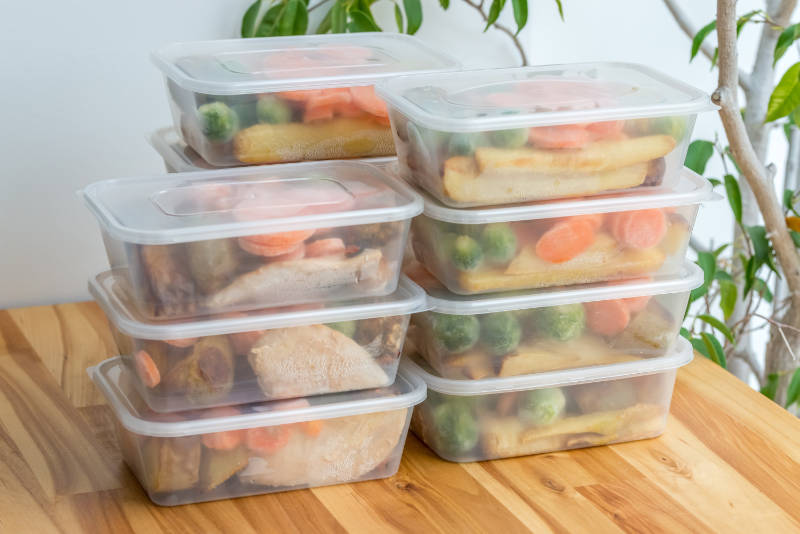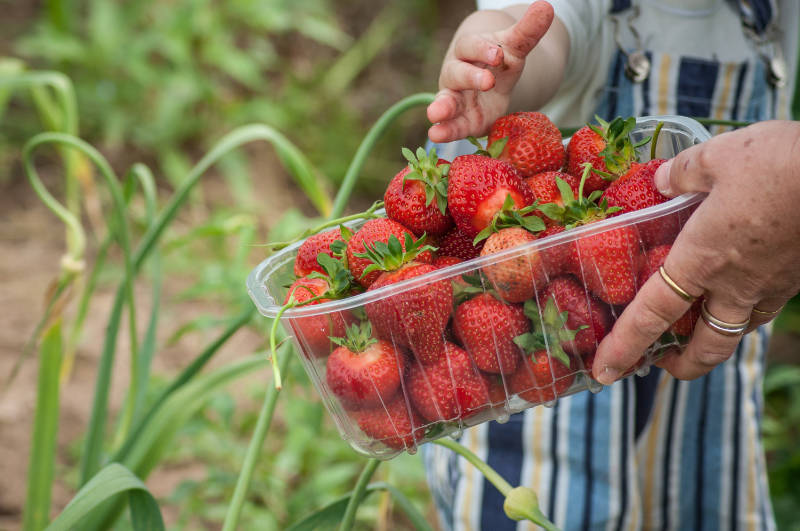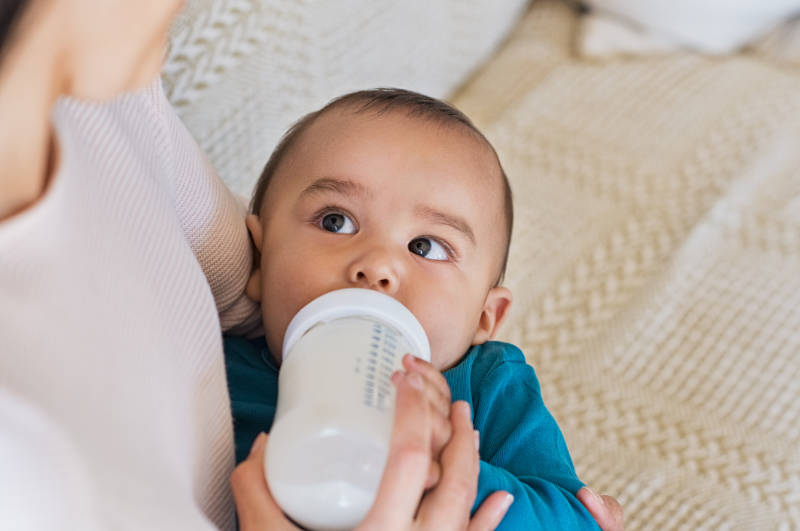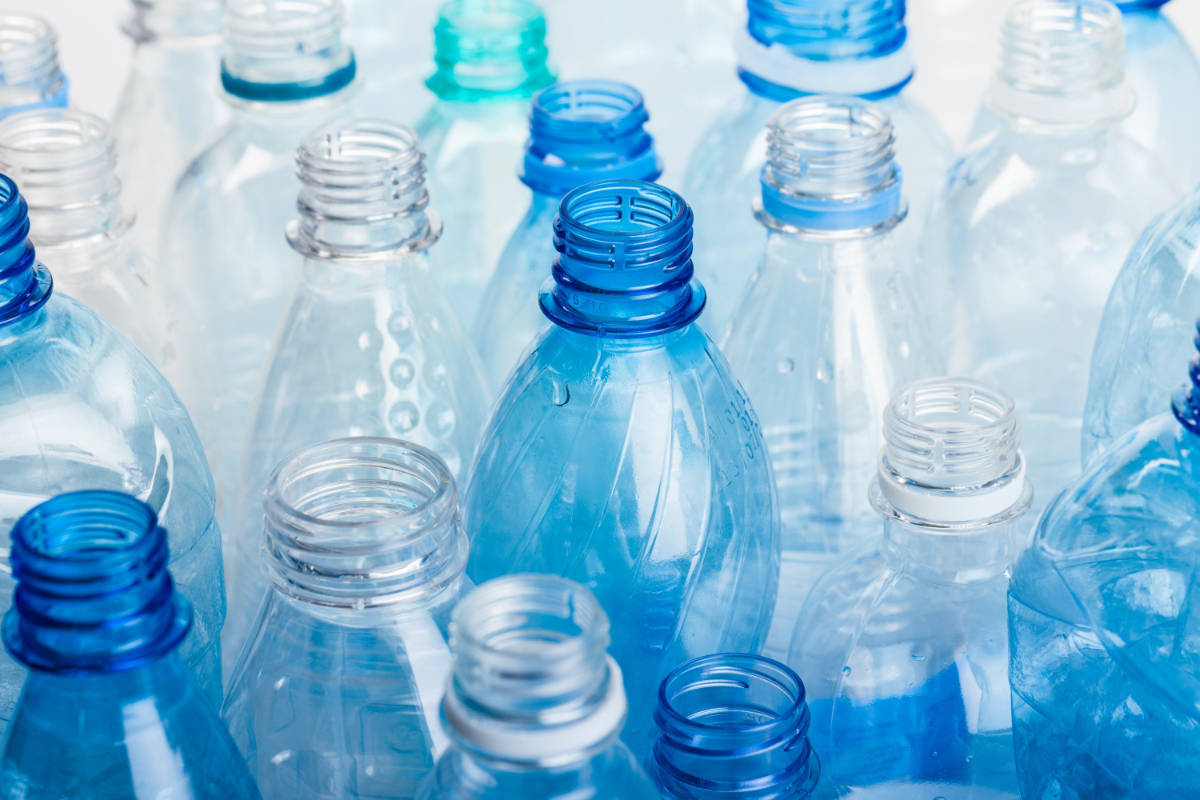We all know that plastic is bad for the environment. Scientists estimate that eight metric tons of new plastics end up in our ocean every year, adding to the 150 million that are already floating about in the water, killing marine life and taking hundreds of years to decompose. But what about a key chemical component that could be toxic – read on to learn what is BPA and should we avoid using it.
It only took that episode of Blue Planet (remember the albatross parents unwittingly feeding their chicks discarded plastics?) to mobilise thousands of TV watchers to cut down on the amount of takeaway cups, water bottles and single-use products used on a daily basis.
But as well as being bad for the planet, there’s a growing body of evidence to suggest that plastic may also be bad for our health too.
Some experts claim that the materials used to create most common plastics are toxic, and that we should try to avoid using them – but should we actually be concerned?
How BPA has become a part of everyday plastics
Making use of an old plastic water bottle at the gym or carrying your lunch in a reusable takeaway curry container feels like a satisfying route to helping the environment. After all, you’re making an effort to cut down on single-use plastics and you’re doing your bit to keep man-made materials out of the ocean.
But some health experts have raised concerns about a chemical in plastic called ‘BPA’ that could be harmful to health, warning that we need to be careful of the types of materials we continue to eat and drink out of.
With single-use plastics still on sale in supermarkets though, should you actually be concerned? Here’s everything you need to know…
What is BPA?
It’s all down to a chemical called BPA. Since the 1960s, we’ve been adding this industrial compound to plastic to create something called ‘polycarbonate plastic’ – the robust and hard-wearing material.
Bisphenol A (BPA) is an industrial chemical that’s used to harden plastic during production. It’s most commonly found in transparent polycarbonate plastics such as some food containers, drinks bottles, baby bottles, tablewear and lunchboxes.
It’s also utilised as a protective coating in some canned foods and on the smooth side of shop receipts. As it’s been in use for decades, BPA is everywhere and it’s difficult to avoid coming across it in day-to-day life.

BPA is also used to make something called ‘epoxy resins’. They’re used to create the smooth inner lining of canned foods like baked beans, which keeps the metal from corroding over time.
As well as foods, it’s also found in many feminine hygiene products, nappies, household electronics, CDs and DVDs and bathroom toiletries.
It’s no surprise then that BPA is now one of the most commonly produced chemicals in the world, although its wide use has recently been thrown into question by mounting health concerns.
This is why you might have started to spot more ‘BPA-free’ labels on products in the supermarket over the past year or so.
How does BPA enter the body?
BPA is ingested or absorbed through skin contact, and studies have found that the main source of exposure is through eating foods that have been packaged in plastic containers – think, the tomatoes and avocados you pick up in the veg aisle of supermarkets.

The chemical leaches out of packaging and into food and drink, especially when the plastics are scratched or heated during cooking and in the dishwasher.
Because of this, it’s not unusual for many of us to have BPA in our bodies on a daily basis. In fact, a recent study by Exeter University suggested that traces of the synthetic chemical can be found in more than 80% of UK teenagers.
Is BPA harmful to humans?
The science is not yet completely clear on how BPA may affect humans. The most worrying thing though is that it has been found to be an Endocrine Disrupting Chemical (EDC). Some studies have found that these qualities cause it to mimic the female hormone oestrogen and can bind to the oestrogen receptors in a cell.
Scientists believe that this oestrogen-like behaviour could increase the risk of breast, prostate, and other cancers in people who were exposed to it in the womb.
Those calling for a ban suggest that it may affect development of mammary glands in women, as well as contributing to type 2 diabetes and cardiovascular problems.

Some experts have also warned that children and pregnant women are particularly susceptible to damage from the chemical, because they have more growth and developmental hormones in their bodies than other age group. As such, the EU, Canada and some American states have already banned the use of BPA in baby feeding bottles.
Studies have found that BPA can leak out of certain plastics and into our food, especially when they are heated. While it’s worth noting that the science is not yet completely clear on how BPA may affect humans, one Harvard study linked exposure to fertility problems and other conditions.
BPA is thought to be an endocrine disruptor, which means it can imitate the body’s hormones. Some research has suggested that it may interfere with puberty, the menopause or cause cancers that are related to hormones. However the research can be difficult to read, as alterations in the endocrine system can be subtle and hard to attribute to a specific cause.
Even though some studies have found certain chemicals in plastics can end up in things we may eat and drink, many food agencies say that because the levels are low, they are within a range considered safe to humans. This is why BPA options are still available to buy.
However, there is a growing call for governments to stop manufacturing plastics with BPA and seek out alternatives instead, suggesting that BPA may be a factor in the rising number of human illnesses. This is why you’ve probably seen lots of ‘BPA-free’ options popping up in shops and supermarkets.
While the federal Food and Drug Administration in the US has not named BPA as harmful, it did take the precautionary measure of banning BPA from baby bottles and sippy cups back in 2012. Businesses in the state of California are also now required by law to provide warnings for products that expose consumers to significant amounts of BPA.
Is BPA safe and should you avoid it?
The Food Standards Agency suggest not. Despite acknowledging that “uncertainties” remain around the potential health effects of BPA on the mammary gland, reproductive, metabolic, neurobehavioural and immune systems, the European Food Safety Authority (EFSA) says that it has assessed the evidence and found that dietary exposure to BPA is not a health concern for any age group.
“Scientists estimate how much of a chemical people can consume daily over their lifetime without being harmed by it,” the Food Standards Agency says. “This is known as the chemical’s tolerable daily intake (TDI). BPA has a temporary TDI set for it.”

“We currently consume less than the TDI for BPA from sources such as food containers. We agree with the EFSA’s conclusion that BPA currently poses no risk to health.”
The National Toxicology Programme (NTP) in the US also recently conducted a long-term study on BPA, looking at the effects of exposure to BPA in rats – before and after giving birth.
The researchers specifically wanted to find out if BPA could increase the risk of cancer in humans. The landmark two-year research programme, which published its results last month, concluded that the plastic additive isn’t a health our threat.
“The scope and magnitude of this study are unprecedented for BPA, and the results clearly show that BPA has very little potential to cause health effects, even when people are exposed to it throughout their lives,” said Steven Hentges from the American Chemistry Council.
What is BPA free?
Plasticisers and BPA have been used in household products for more than 50 years, our supermarkets are drowning in them, so it’s pretty difficult to avoid them and live a non-reclusive lifestyle. That being said, occasionally drinking from a plastic bottle or eating from a can is probably not a reason to panic.
Plastic and aluminium is everywhere we look, so it’s not easy to avoid BPA, however there are some steps you can take to reduce your exposure if you wish to.
If you’re still concerned though, there are ways that you can cut down on your BPA intake, help the environment and generally live a healthier lifestyle at the same time.
- Do away with the flimsy plastic bottles and purchase a BPA-free, glass or stainless steel water bottle. The same goes for reusable coffee and tea mugs too.
- Instead of plastic Tupperware, store food in glass or silicon containers and opt for fresh or frozen veggies instead of canned.
- Studies have suggested that heating plastics can cause BPA to further leach, so keep your plastics cool. It’s also a good idea to cook from scratch. Not only is it healthier and cheaper than eating processed foods, but you’ll also avoid lots of unnecessary packaging too.
- Shopping for unpackaged foods at organic fruit and veg shops, butchers, fishmongers and farmers markets can reduce contact with the plastic containers you find in meats, fish and loose produce at the supermarket.
- Avoiding processed foods, like ready meals, can cut down on leached BPA exposure, while using a reusable tote bag for your shopping will cut down on the amount of plastic bags you use (and save you money in the long run).
- Carry a metal water bottle and store food in glass containers, opt for plastic-free toiletries in the bathroom (Lush have a whole range of solid shampoo bars and body washes) and there are also plenty of BPA-free feminine hygiene products on the market (check out yoppie.com for organic, biodegradable tampons).
The US Department of Health and Human Services has published BPA information for parents on reducing their child’s exposure.
The choice, as ever, is up to you, but more is discovered about the impact of plastic, we’re sure that this isn’t the last we’ll hear about BPA.
Looking to have a more sustainable garden? Read the Wise Living guide to how to create a self-sufficient sustainable urban garden.































































